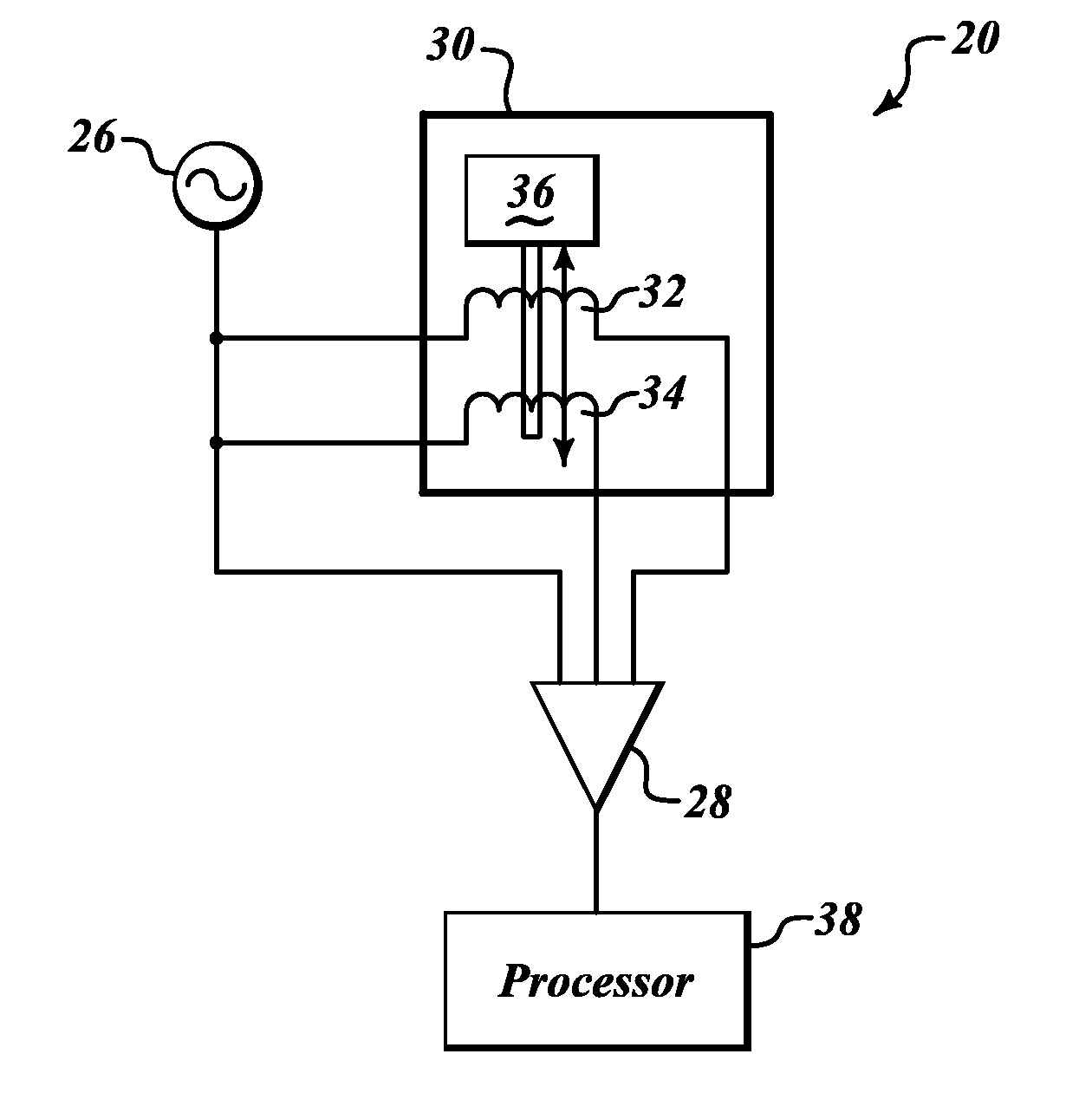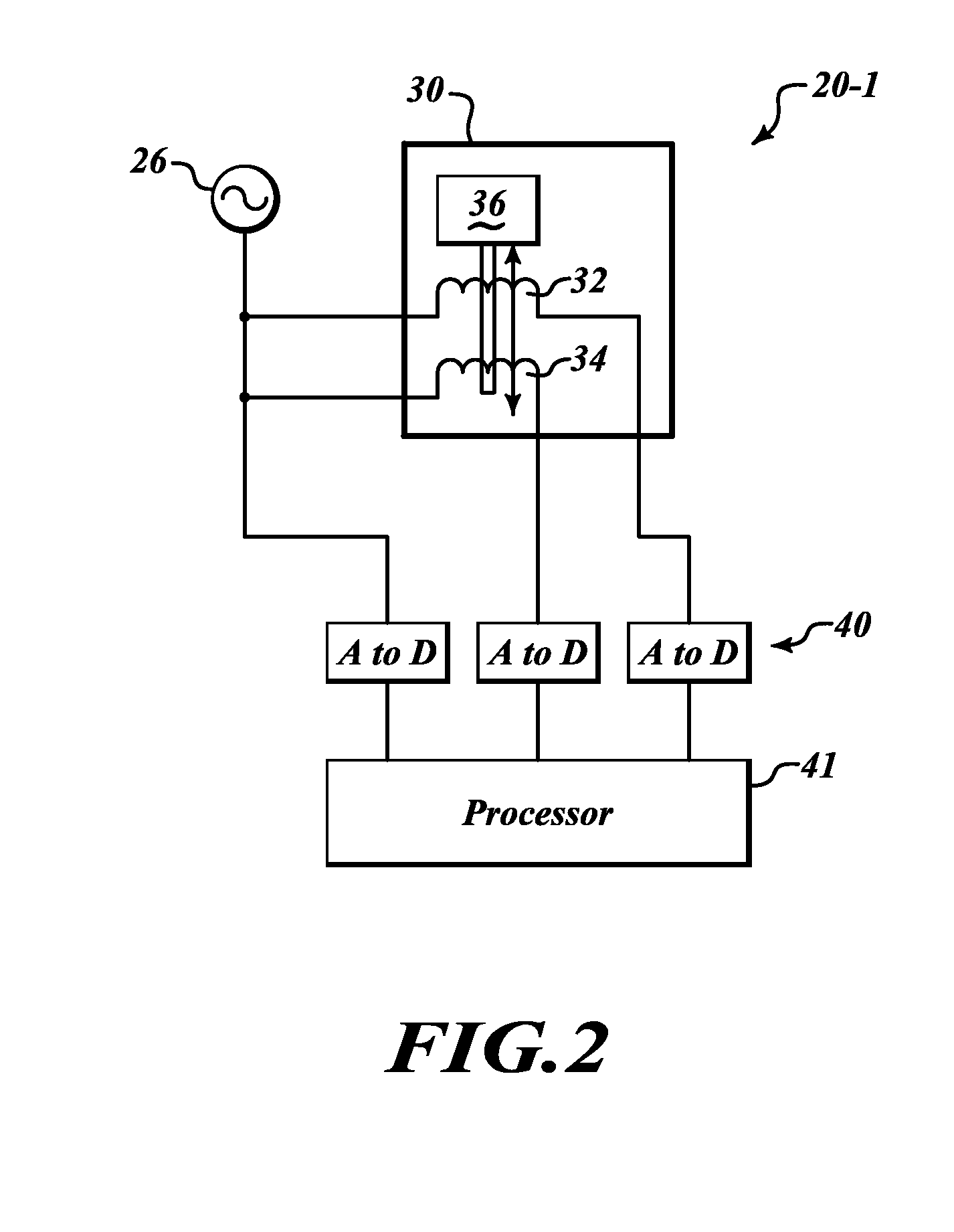Systems and methods for performing vibration analysis using a variable-reluctance sensor
a technology of resistance and vibration analysis, applied in the direction of magnetic property measurement, material magnetic variables, instruments, etc., can solve the problems of prone failure of accelerometers and relatively high cost, and achieve the effect of high reliability
- Summary
- Abstract
- Description
- Claims
- Application Information
AI Technical Summary
Benefits of technology
Problems solved by technology
Method used
Image
Examples
Embodiment Construction
[0007]FIG. 1 illustrates an exemplary sensor circuit 20 that uses a variable-reluctance sensor 30 for sensing vibration of a structure to which the variable-reluctance sensor 30 is attached. The sensor circuit 20 also includes an oscillator 26, a comparator 28, and a processor 38.
[0008]The oscillator 26 is connected to a first coil 32 within the variable-reluctance sensor 30 and to an output end of a second coil 34 also located within the sensor 30 via a combiner (not shown). The input end of the first coil 32 is connected to a first input of the comparator 28. The output end of the second coil 34 is connected to a second input of the comparator 28. An output of the comparator 28 is attached to the processor 38.
[0009]The oscillator 26 sends a signal through the variable-reluctance sensor 30 via the input of the first coil 32. The signal produced by the oscillator 26 compared with the signal at the output of both the first coil 32 and the second coil 34 via the comparator 28. The var...
PUM
 Login to View More
Login to View More Abstract
Description
Claims
Application Information
 Login to View More
Login to View More - R&D
- Intellectual Property
- Life Sciences
- Materials
- Tech Scout
- Unparalleled Data Quality
- Higher Quality Content
- 60% Fewer Hallucinations
Browse by: Latest US Patents, China's latest patents, Technical Efficacy Thesaurus, Application Domain, Technology Topic, Popular Technical Reports.
© 2025 PatSnap. All rights reserved.Legal|Privacy policy|Modern Slavery Act Transparency Statement|Sitemap|About US| Contact US: help@patsnap.com



